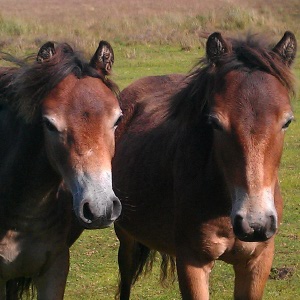Love These Tips On How To Care For Your Elderly Bunny
19/01/22 17:06
Caring for the Elderly Bunny
Rabbits develop limitations as they grow older. As your rabbit grows older, it may develop health problems, lose energy, and have different appetites. An elderly rabbit is only 7 years old. You want to care for your pet, but how you care for it in its prime age will determine this.
You'll need to adjust to an old rabbit's new metabolism, reduced mobility, and grooming issues if you want to care for him. It's possible that you'll need to give it dry baths, add more litter boxes, provide more water, or change its food. You'll need to take more drastic measures if your bunny has age-related problems like blindness, deafness, kidney problems, incontinence, sore hocks, or arthritis. This may affect how you interact with or feed the rabbit after medical intervention, as well as how the rabbit's enclosure is set up.
Even a healthy rabbit will need to make lifestyle changes. This may entail bringing its food and water closer to where it sleeps. It may require softer or warmer bedding. To help with joint problems, ramps may require a lower incline. Your bunny may crave more attention or require low-impact exercise. You can buy an X-pen for your rabbit’s exercise.
Obesity, dental problems, and other health issues in older rabbits can all be traced back to their diet. Obesity in senior rabbits can cause heart disease, arthritic flare-ups, respiratory symptoms, sore hocks, and liver disease (fatty liver), all of which can exacerbate any other illnesses your rabbit may develop. On the other hand, some older rabbits may have difficulty maintaining their weight. This could be the result of digestive issues, dental issues, or other illnesses. You may also face issues if you have decided to adopt a bunny who has experienced domestic abuse.
Rabbits are considered elderly when they reach a certain age.
Rabbits are generally considered elderly when they reach the age of 6-8 years, with an average life expectancy of around 10-12 years. Larger rabbits with a shorter lifespan may begin to show signs of aging as young as four years old.
Symptoms of advanced age
As rabbits grow older, they will begin to show physical differences. Don't be surprised if your rabbit's physique and energy level change slowly over time, just like humans. Any sudden changes, on the other hand, could be a sign of illness, and you should consult a rabbit-savvy veterinarian.
- Fur is thinning
- Muscle mass has shrunk
- Loss of weight
- They are less active
- Ears are scaling
Taking Care of an Elderly Rabbit
Rabbits slow down as they get older. This could be due to a lack of energy or mobility problems like:
- Lethargy
- Obesity
- Joint pain
- Arthritis
Each of these has its own set of issues. Make changes to your rabbit's environment to help it move more freely.
- Keep things close at hand. Make sure your rabbit has access to its litter box, food, and water, as previously stated.
- Make the bedding softer. If your bunny has a gentle, supportive place to rest, joint pain can be greatly reduced.
- Reduce the angle of the ramps. An aging rabbit will find it much more difficult to jump, run, or climb. After all, the rabbit's joints are less supple, and the rabbit has less energy.
- Increase the number of litter boxes. If your bunny is running around the house, it may not have the energy to make the trip to the litter box. Instead, scatter a few around your house. An elderly bunny will appreciate not having to go to the bathroom in more than one room.
- Anti-slip mats are available. Hardwood or tile floors are difficult to navigate for any bunny. A fall, on the other hand, is dangerous for an elderly bunny. Anti-slip mats should be placed near ramps, furniture, and other areas where bunnies require traction.
Care for Senior Rabbits on a Day-to-Day Basis
It's fantastic if your rabbit doesn't get sick as it gets older. Its day-to-day care, on the other hand, will not be the same. You can ensure the bunny's health and happiness by making a few changes to the routine.
Veterinary Examinations
An elderly rabbit, whether or not it has health problems, requires more frequent visits to the veterinarian. Once it reaches the age of six, it should have a full physical examination, including blood tests, at least once a year. The blood results accomplish four things:
- Your rabbit's health is constantly monitored by your veterinarian.
- Early detection of genetic defects or diseases
- Early detection of developing conditions, such as arthritis, allows treatment to begin.
- Allows you to talk about dietary changes for the rabbit. This is especially true as the animal's appetite and nutritional requirements change.
Exercise
While older rabbits may be less active, they still require exercise to stay healthy.
High-power activities are not good for its joints. You can, however, schedule play sessions to keep the bunny active. This could consist of a few minutes of playing and exercising with your bunny as they require the right kind of movement to ensure that their muscle mass isn’t getting weaker along with making sure that they get the proper nutrition.
The above blog has discussed the basics of how you should take care of a rabbit. If you have an older bunny you need to put in extra efforts to ensure their life is long and safe.
Finally, do you know someone who'd find this helpful? Please share, the more we can spread awareness of the benefits of natural therapies the better! :)
Find out more about other natural animal therapies here at Taranet. Or read other articles in this Natural Pet Health Blog. Take a look at the sitemap here to explore!
About The Author
This is a guest post by Esther Praag Phd
